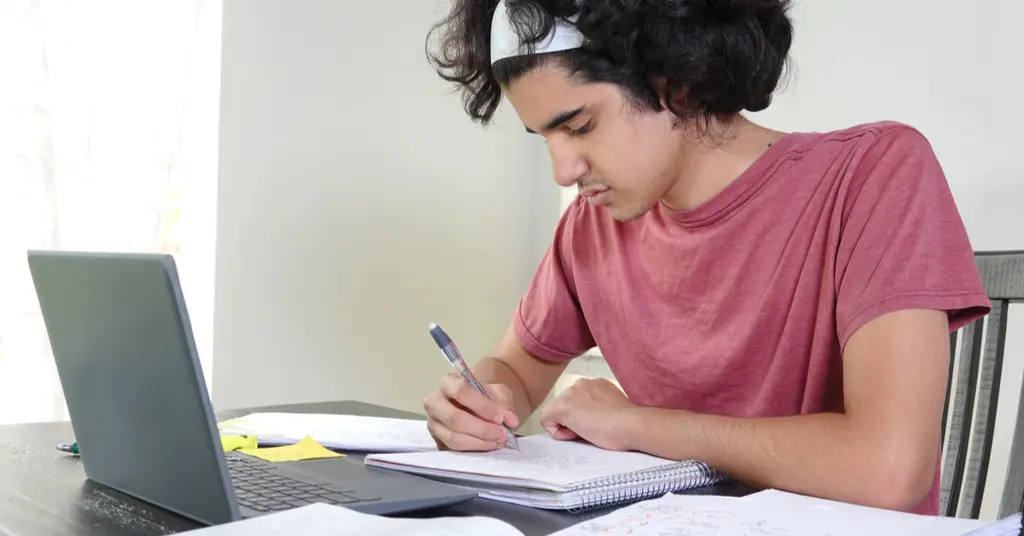The ACT® score report provides detailed information about your exam performance to you, your high school, and the colleges or universities to which you have applied. This blog details everything you need to know about your score report and its components.
What Is in Your ACT Score Report?
Your ACT score report displays your composite score, section scores, cross-test scores, and subscores. In addition, you’ll also receive information about reporting categories for each subject, along with your national and state ranks. The score report is divided into the following three parts:
Composite and Section Scores
On your score report, the most important score that you will see is your ACT composite score. This score will range from 1 (lowest) to 36 (highest). The scaled scores from the four sections (English, Math, Reading, and Science) are averaged and rounded off to the nearest whole number to get the composite score.
Additionally, you will see ACT section scores for each of these four sections, evaluated on the same scale of 1-36. For the optional writing section, the score ranges from 2 to 12; however, it does not contribute to your composite score.
Detailed Results
Your score report gets more detailed as you scroll down the page. The ACT section scores are further divided into categories and percentages of correct answers. You will also find the college readiness range for each reporting category. These ACT benchmarks denote a student’s readiness for college-level coursework. Having in-depth information about each reporting category will help you analyze your performance and decide if you need to improve your score or retake the test.
Your score report also displays two cross-test scores for STEM (Science, Technology, Engineering, and Math) and ELA (English Language Arts), ranging from 1-36. The STEM score represents how you performed on your Math and Science tests, whereas your ELA score combines your performance on the English, Reading, and Writing tests. If you do not take the Writing test, the ELA score will not be reported.
You will also receive seven subscores, ranging from 1-18 to further analyze your performance in different subject areas.
National and State Ranks
You get national and state ranks for both your composite and section scores. Your rank displays the percentage of students who scored the same or lower than you. For example, receiving a rank of 80 would mean that 80% of the test-takers earned that composite score or below.
To learn in detail how ACT scores for each subject are calculated, read our ACT scoring guide.



Types of ACT Score Reports
Based on pricing points, your score reports can be classified into three categories. Consider the following information carefully before choosing which score report you want to select.
Free reports
You can send up to four free ACT score reports to colleges until the Thursday after your test date. While this may appear as an easy option, you will not be able to see your score report before it is sent to colleges. Also, you will not be able to take advantage of score choice.
Standard/ Regular reports
If your free score report period has passed, you can use the standard/regular reports to send your scores to colleges. You need to pay $18 for this report per test date and per school. The benefit of going with this option is that you will be able to see your scores before they are sent to colleges and take advantage of the score choice policy. However, sending regular reports can be expensive.
Read our blog on how to send ACT scores to colleges to learn about the timeframe and process of sending scores to the colleges of your choice.
How to download ACT score report?
You can download your ACT score report by following these simple steps:
- Log into your MyACT account. This needs to be the same account that you used for your test registration.
- Once logged in, click on “Scores” at the top of the page.
- Next, click on the test date you want to see the scores for.
- There, you can print an unofficial copy of your ACT score report using the print option on your browser. When the print dialog box opens, you can also save the score report as a pdf.
Related Questions
For admission purposes, colleges usually consider your composite and section scores, so you do not need to worry about your ACT subscores.
The ACT does not mail an official hard copy of the score report to students. If you need a hard copy of your score report, you can print it from your MyACT account.
You have the option of sending four free ACT score reports to colleges. Once the free score report period is over, each report that you send will cost you $18.
Many colleges now allow students to send their scores directly on their admission application without submitting the official ACT report. This process is known as “self-reporting”.
As printing an unofficial score report is for personal use only and cannot be sent to colleges, there is no need to get it certified.




